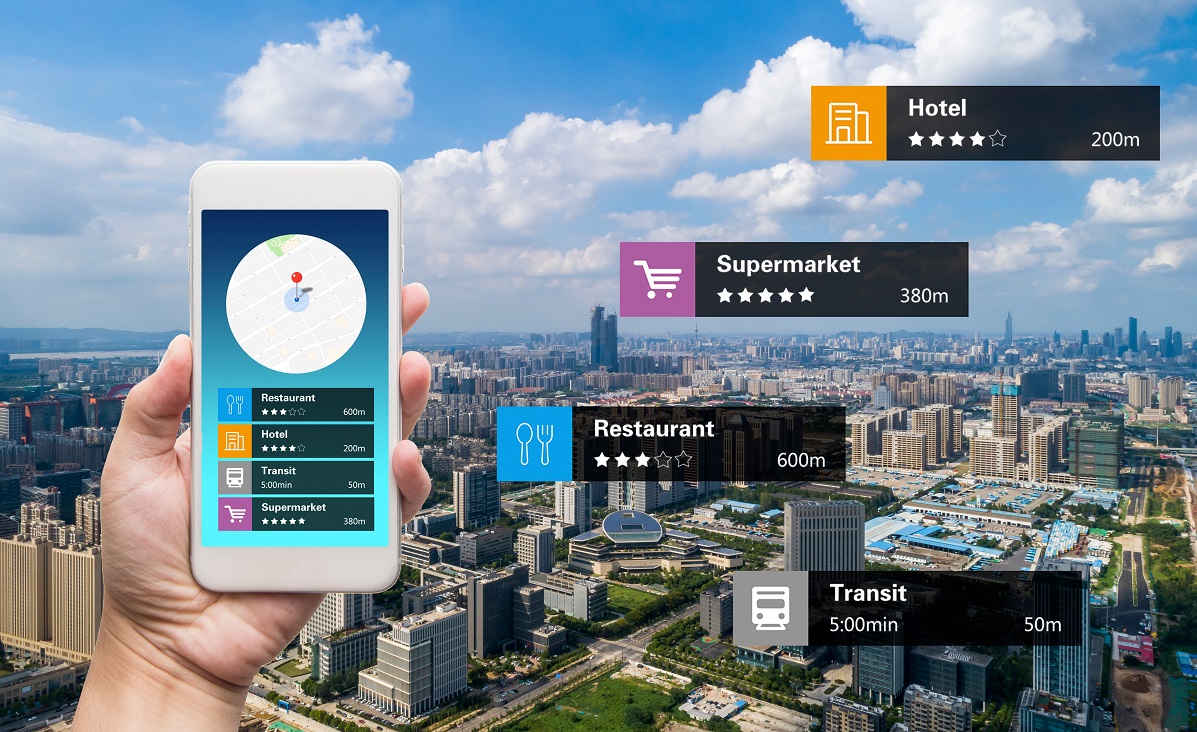5 Business Benefits of AR Integration
In the evolving business landscape, Augmented Reality makes businesses thrive.
From manufacturing to e-commerce, businesses are leveraging numerous benefits of AR integration. Driving sales, increased user engagement, unparalleled user experience, and grown brand awareness are among the inevitable Augmented Reality competencies.
Though the technology is not new in the market, many entrepreneurs are still sitting on the fence wondering about the profits behind it.
So, we decided to gather the core insights you need for your business.
5 Benefits of AR for Businesses
From immersive customer experiences to improved employee training, here are five inevitable benefits highlighting AR's transformative impact on contemporary business operations. Explore the benefits of AR integration awaiting you!
1. Boosted Sales Beyond Measures

According to ThinkMobiles, 2 in 3 online customers prefer AR-powered online stores compared to conventional stores. These stats are easy to explain.
Related post: AR Shopping for People with Disabilities (PwD)
Augmented reality engages users way more than conventional simple e-commerce catalogs. The math behind this is that AR-enabled content evokes users' sentiments. Remember, the more emotions your brand provokes, the quicker users make a decision.
Thinking about whether you can incite positive emotions and stimulate users for conversion? Here strengths of augmented reality come into the picture and solve the challenge for you.
For example, an AR-based virtual try-on element, helps users try before making a purchase, making them more confident with their potential purchases. The more confident consumers are, the lower the return rate.
According to Research Gate, AR-based businesses help companies minimize the return rate by approximately 30%. So, reducing the return rate eventually leads to skyrocketing sales over time.
2. Raised Brand Awareness and Engagement

AR integration is a tried-and-tested way to raise brand awareness of your product. And, companies that incorporate Augmented Reality in business, especially in their marketing strategies present their solution in a user-friendly and up-to-date way.
For instance, Ulta - A beauty and cosmetic brand rolled out an AR-based virtual try-on feature. It allows users to try products before purchasing them which boosts brand awareness.
This approach will persuade users to buy Ultra’s product compared to their rivals with no virtual try-on feature. And, adhering to this Ulta witnessed a 700% surge in brand engagement.
This clearly defines that marketing campaigns powered by AR attract more users’ attention, evoking positive emotions and making customers want to try them personally.
This approach brings higher click-through rates and lower customer acquisition costs as the primary advantages of AR in marketing.
3. Enhance User Involvement

There’s no doubt, AR-powered apps allow users to develop user-generated content (UGC).
This simply means customers build their own content inside the product and share it in a brand-specific and organic approach. For example, different channels consist of social media content types like images, infographics, podcasts, etc. This simply means the more ways customers have to create UGC, the more you attract user engagement.
According to Adsmurai, user-generated content is two-fold more high-performing compared to branded content presenting a nearly 7x higher engagement ratio. But, how do you let users create customer-generated content by integrating augmented reality?
AR-powered filters are an example of AR trends that are enhancing user engagement. This will allow customers to create, engage, and share their customized photo and video content with others.
For example, you have a social platform app like Instagram. By integrating face filters in your AR-oriented software, you allow users to create animated and personalized photos and videos that attract user engagement and boost sessions.
In simple terms, the more User user-generated content consumers create, the more loyalty the brand achieves. This way, you also achieve a better retention rate helping in maximizing revenue.
Adhering to this, you can leverage higher user engagement as one of the biggest benefits of augmented reality for business.
4. Raised Employee Satisfaction Index (ESI)

Augmented Reality is widely used in the automotive and manufacturing industries. The logic behind is simple - it helps remove cognitive overload.
Let’s take AR-powered training sessions as an example. You hire a trainee worker, you are required to train them faster and cost-effectively. But, are huge documents and manuals the ideal way to get rookies on board?
Conventional learning materials often lead to cognitive overload. It occurs when trainees are needed to process more data than their memory can accommodate. As a result, this makes employees frustrated and negatively impacts their decision-making performance.
Here, AR-powered training proves more effective in improving ESI (Employee Satisfaction Index).
● Newbies skip mammoth documentation and get AR-powered eye-pleasing virtual snippets. This digital experience boosts the training pace and drives engagement keeping workers motivated to learn further.
● It improves the decision-making process while saving employees time during the training session. The faster the decision-making process will be, the higher the performance your enterprise achieves.
5. Provide Unparalleled User Experience

Augmented Reality business means offering customers with a bespoke digital experience. It enables users to bridge their virtual and real spheres into the world. This mirage feeling inspires customers to select your product rather than competitors.
For example, Gucci’s virtual try-on feature. This way, Gucci allowed its users to blend both virtual and in-store experiences into a whole new level.
Primarily, users can customize their preferred sneakers, and jewelry and try them in real-time. Next, customers can skip additional store visits and shop remotely. This eminent experience helped Gucci grab a win-win strategy and leverage the benefits of augmented reality leaving competitors behind.
So, why should you ditch AR-powered features for your business growth?
Finally… Can You Imagine the Vastness and Tangibility?
Industry giants like Sephora, Ikea, and Loreal are using AR to retain customers. Consequently, it’s transforming business operations and customer interactions, proving to be a valuable tool for enhancing engagement and nurturing innovation.
So whether you’re a retail, e-commerce, or healthcare company, the AR benefits are too great to skip. Grab on to the phase and hop onto the bandwagon, before the market gets flooded.
If you are looking for implementation strategies for AR integration, a trusted AR development company to help your product go viral, talk to us!






